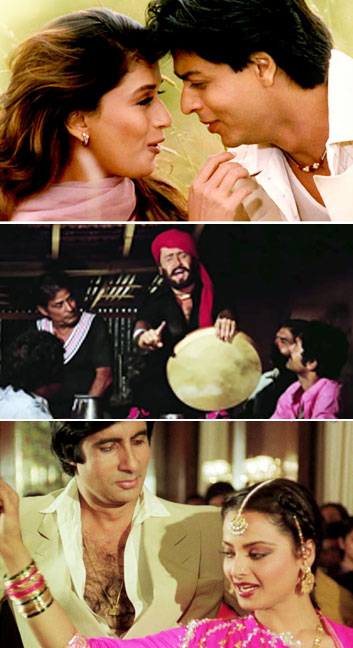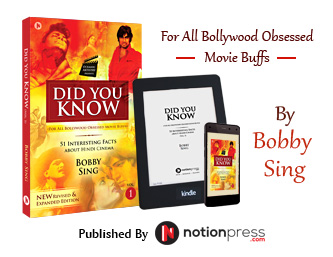
Beginning his journey from Punjab, living with the people, tradition, and music surrounding the beautiful fields, Yash Chopra never forgot his initial years as a down-to-earth Punjabi in his entire life. Remembered as the King of Romance, his music always remained the key attraction. Plus, traces of Punjabi folk prominently used to be there in almost all the films he was associated with in his illustrious career.
However, keeping it focused on his directorial ventures, here is a brief account of how Punjabi music had to be there in his soundtracks right from the first film to the last. The fact also proves how deeply he knew Punjabi folk music, realising its universal appeal.
In his debut film Dhool Ka Phool (1959), the lesser talked about classic, Tu mere pyar ka phool hai was based on the folk composition Mitti da bawa later popularised by Jagjit Singh. The film also had an original song, Tere pyar ka aasra, beautifully conceptualised on the Tappe format of Punjabi folk.
In Dharamputra (1961), the famous qawwali Jo yeh dil deewana was inspired by the Punjabi song Chann ve ke shaukan mele di sung by Surinder Kaur. A few years later, the trendsetter Waqt (1965) had Din hai bahar ke with all the elements of a Punjabi rhythm-based song. But the inclination towards Punjabi music was more evidently seen in Aadmi Aur Insaan (1969), including tracks such as Neele parbaton ki dhara and Jaagega insaan starting with dhol beats and a Punjabi style alaap. The film also had the upbeat Dil karta o yaara dildara entirely conceived as a Hindi-Punjabi dance song.
As he began his new production house, Chopra started using Punjabi lyrics as well. Apart from Ab chahe maa roothe ya baba having a clear Punjabi undercurrent, Daag (1973) also had Ni main yaar manana ni, including Punjabi verses. The flavour of Punjab made a comeback in Kabhi Kabhie (1976) in the song Tera phoolon jaisa rang. Its concluding part was based on the famous traditional Punjabi folk Jind mahi baaj tere. Trishul (1978) also had Jo ho yaar apna, a song highly inspired by Punjabi folk format.
Bravely coming up with an offbeat film, Chopra’s Kaala Patthar (1979) had Jaggeya Jaggeya, a song with pure Punjabi lyrics. It is strange to see that while the original LP record of the film mentions the title rightly, the official YouTube upload by Yash Raj films wrongly mentions it as Jag gaya jag gaya displaying unawareness about the lyrics. The film’s soundtrack also had Meri dooron se aayi baraat and Mujhe pyar ka tohfa deke (not in the film) having a strong Punjabi feel.
Silsila (1981) even had a Sikh wedding in the script with Amitabh and Rekha dancing on the dhol beats in a baraat and just minutes later shaking a leg together in Pehli pehli baar dekha aisa jalwa. The song had partial Punjabi lyrics. Besides, the soundtrack also had a devotional Shabad Banh jinha di pakadiye sung by Bhai Harbans Singh Ji Jagadhari Wale.
In Mashaal (1984), though the Holi aayi re track is said to be inspired from a Marathi song, its composition has a strong Punjabi folk influence of Balle balle ni tor punjaban di that was earlier used in Gori sasural chali in Shagoon (1964).
With no such song in Faasle (1985) and Vijay (1988), the Punjabi influence was again witnessed in Chandni (1989) in the song Mehbooba and Main sasural nahin jaoongi, with the traces of similar folk wedding songs in Punjabi traditional repertoire. Chandni also had a sequence in which Rishi Kapoor and Vinod Khanna introduce each other in the foreign land, singing a famous Punjabi song Haye o rabba, originally sung by the Pakistani legend Reshma. Continuing the tradition, Lamhe (1991) had Bindiya chamkegi included in the famous entertaining medley with Punjabi phrases.
Parampara (1993) had the track Aadhi raat ko derived from Punjabi folk Kala doriya. The same year we had Darr with Solah button meri choli mein that was again a wedding-sangeet song along with Ishq da rog bura (not included in the film). While Dil To Pagal Hai (1997) had Dholna and the hook line of Le Gayi Le Gayi inspired by Punjabi music, Veer-Zaara (2004) was entirely based on a Punjab based script. It had tracks as Aisa des hai mera and Lo aa gayi Lohri ve sung by Gurdas Maan, including references of Punjabi folk song Jugni and Sarke sarke jandiye mutiyare ni.
The journey that started in 1959 ended with Jab Tak Hai Jaan (2012), including Punjabi-based songs as Heer and Jhalla (not Challa as popularly written) sung by Rabbi Shergill.
Looking at the long list, no doubt Chopra was a true Punjabi who never forgot his roots and always tried to incorporate the fragrance of lush green fields of Punjab and its folk music in his films.
Bobby Sing
bobbytalkscinema.com
NOTE : The article was first published in the Sunday Column by Bobby Sing in THE FREE PRESS JOURNAL Newspaper (Mumbai Edition) on 26th September 2021
Note : The write-up is a chapter shared from my upcoming book releasing soon. So any additions, rectifications suggested by friends are welcome to make it better.
----------
 For more such interesting articles on lesser known facts on Hindi Cinema, do try DID YOU KNOW
For more such interesting articles on lesser known facts on Hindi Cinema, do try DID YOU KNOW Series by
Bobby Sing available in both
Book and
E-book form
.
Also available
at Notionpress and Flipkart stores (in India)


 For more such interesting articles on lesser known facts on Hindi Cinema, do try DID YOU KNOW Series by Bobby Sing available in both Book and E-book form.
For more such interesting articles on lesser known facts on Hindi Cinema, do try DID YOU KNOW Series by Bobby Sing available in both Book and E-book form.